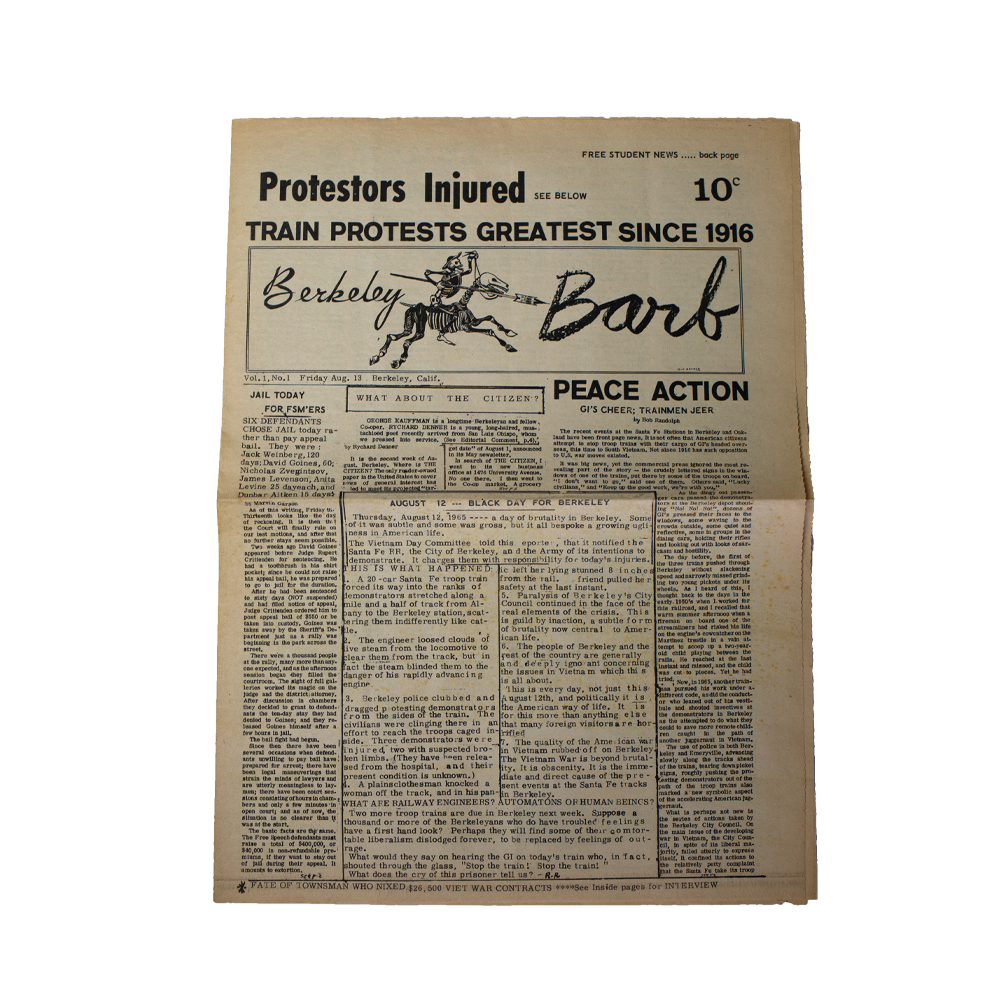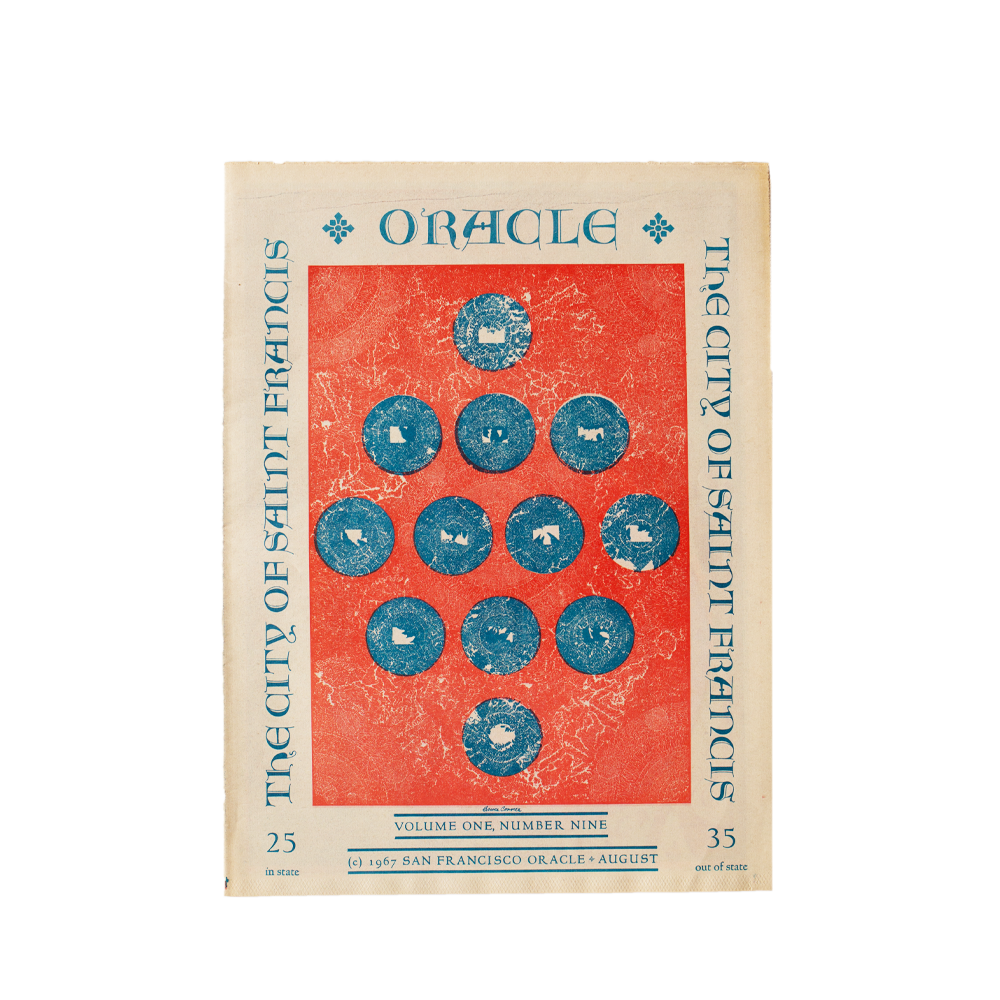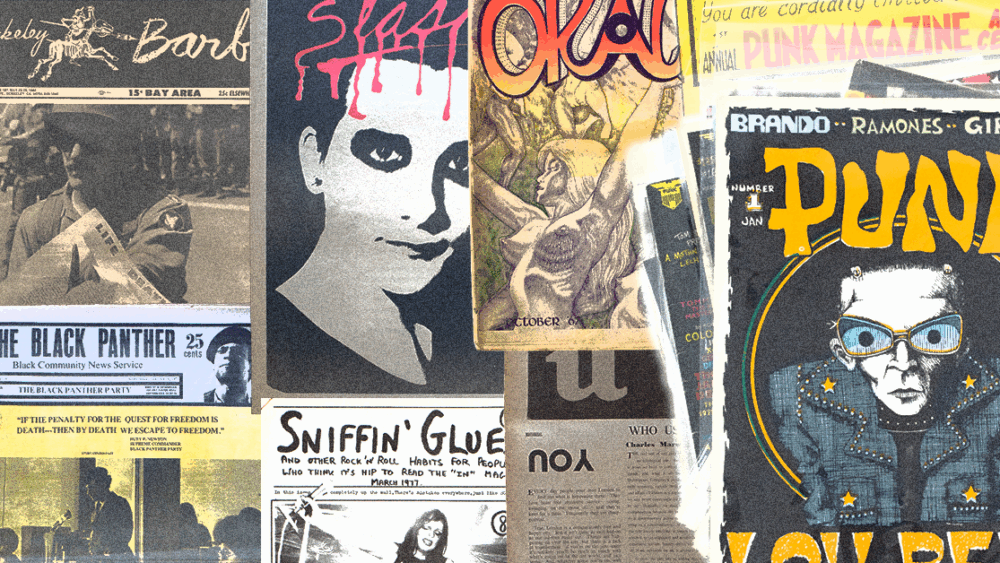The 1960s and 1970s was a tremendous emergence of underground newspapers, counterculture zines, and various alternative press publications. This development was largely due to the lack of access to mass media publications by a significant number of sub-cultures. During a period which included the Vietnam War, Civil Rights, the sexual revolution and wide-spread drug experimentation, these new publications provided a voice to many on the periphery of mainstream society.
Prominent Newspapers/Zines
Let’s highlight a few of the counterculture publications we have in our collection:

The Berkeley Barb was an important voice of counterculture, mixing radical politics with psychedelic art, local happenings, opinions, and reviews. It covered the Anti-War voice, Civil Rights movements, the Free Speech Movement, the Sexual Revolution. It often sparked controversy, notably with its personal ads. It became one of the most influential alternative newspapers of the era and provided a platform for progressive ideas and a counter-narrative to mainstream media.

The Berkeley Tribe emerged from a dispute with Barb Publisher Max Scherr in 1969, with numerous staff departing and starting their own competing newspaper. The Tribe positioned itself as more radical and politically astute. It covered similar countercultural topics, often with a more graphic and provocative approach. It also featured contributions from notable artists and writers like Robert Crumb and William Burroughs.

Black Panther was another significant part of the 1960s counterculture. While its intention was also to create a voice for those who were shut out of main media publications, its primary objective was to counter false narratives and negative portrayals of Black people. It was known for its uncompromising stance, featuring explosive rhetoric and critiques racial injustice and the ineffective and under-represented political system. It provided a platform for the voices of the Black Panther Party and a wider Black Power movement, whose message of Black nationalism, self-defense, and liberation resonated with many black Americans.

The City of San Francisco Oracle was known for is psychedelic publications and being a proponent of counterculture. It featured such notable beat writers as Ginsberg, Snyder, Michael McClure and Lawrence Ferlinghetti. Although never as popular or widely-circulated as its brethren like The East Village Other and The Berkeley Barb, nor as political as such radical-left undergrounds as The Black Panther and New Left Notes, it was recognized as being the most daring, creative, and experimental of the alternative press papers of the late Sixties. It was heavily influenced by both the Fluxus and mail-art movements as well as Andy Warhol’s avant-pop aesthetic.
A Voice For the Voiceless
The underground press of the 1960s and 1970s wasn’t just about news—it was about giving a voice to the unheard, challenging mainstream narratives, and fueling movements that reshaped society. From the radical politics of The Berkeley Barb to the explosive truth-telling of The Black Panther, these publications captured the energy of resistance, creativity, and change. They remind us of the power of independent media to disrupt, inspire, and unite communities in times of upheaval.
If this history inspires you, check out some of the other counterculture items in our collection.



Comments are closed.